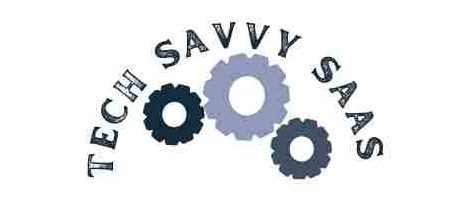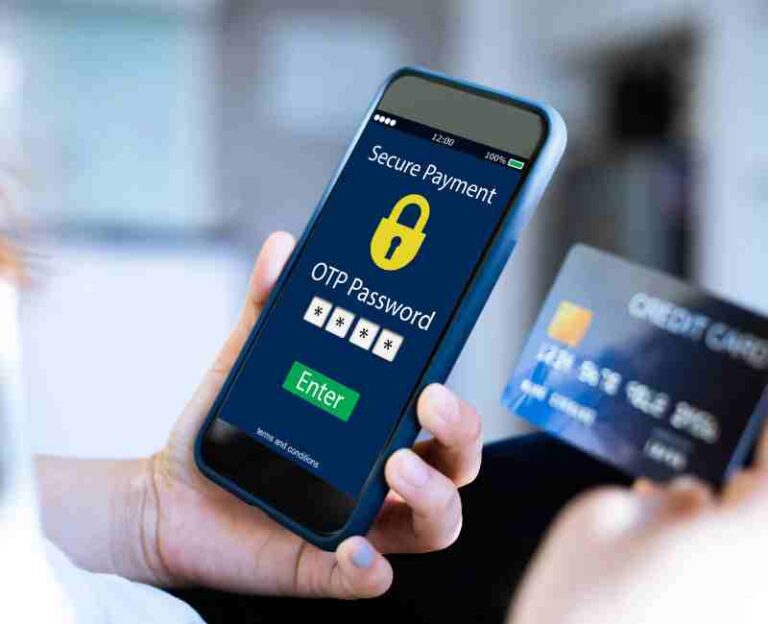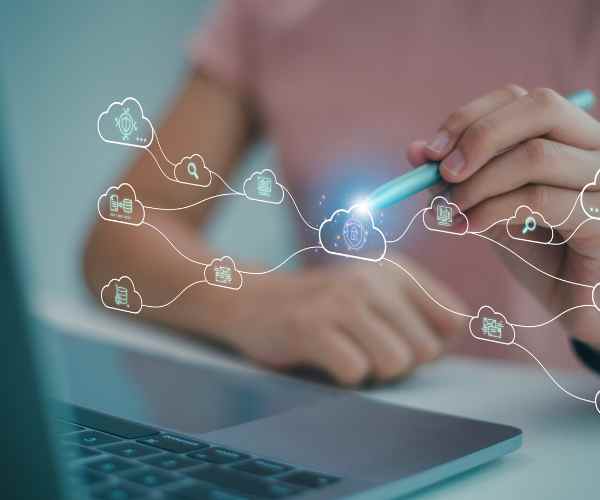Gamified learning platforms are educational tools that leverage game design elements and mechanics to engage learners in the learning process. These platforms integrate elements such as points, badges, leaderboards, challenges, and rewards into educational content to make learning more interactive and enjoyable.
Making education interactive is crucial in today’s dynamic learning environment. Traditional methods of teaching often fail to capture the attention and interest of students, leading to disengagement and reduced learning outcomes. Interactive learning environments foster active participation, allowing students to explore concepts, apply knowledge, and collaborate with peers.
Gamification adds a new dimension to the learning experience by infusing elements of game design into educational content. This approach creates an environment where learners are motivated to progress through challenges, earn rewards, and compete with peers in a friendly competition. By making learning more engaging and immersive, gamified learning platforms enhance students’ motivation and drive them to actively participate in the learning process.
Moreover, gamification enhances the learning experience by providing immediate feedback, allowing students to track their progress, and offering personalized learning pathways tailored to individual needs. This interactive approach not only increases knowledge retention but also cultivates essential skills such as critical thinking, problem-solving, and collaboration.

How Gamified Learning Platforms Work
Gamification in education refers to the process of integrating game elements and mechanics into learning activities to enhance engagement, motivation, and learning outcomes. It draws inspiration from the principles of game design to create interactive learning experiences that captivate learners and encourage active participation.
One of the key aspects of gamified learning platforms is the incorporation of game elements into educational content. These elements include, but are not limited to:
- Points: Points are awarded to students for completing tasks, answering questions correctly, or reaching milestones. They serve as a measure of progress and achievement, motivating learners to strive for higher scores.
- Badges: Badges are virtual rewards given to students for mastering specific skills, completing challenges, or reaching goals. They act as symbols of accomplishment and can boost students’ confidence and self-esteem.
- Leaderboards: Leaderboards display the rankings of students based on their performance and achievements. They introduce an element of competition and encourage students to strive for higher ranks, fostering a sense of friendly competition among peers.
- Challenges: Challenges are tasks or activities that require students to apply their knowledge and skills in real-world scenarios. They provide opportunities for hands-on learning and problem-solving, making the learning experience more interactive and engaging.
- Rewards: Rewards can come in various forms, such as virtual currency, unlockable content, or special privileges. They serve as incentives for students to engage with the learning material and complete tasks, reinforcing positive behavior and motivating continued participation.
Examples of gamified learning platforms include:
- Duolingo: Duolingo is a language-learning platform that gamifies the process of learning a new language. It uses gamification elements such as points, badges, and progress tracking to make language learning fun and engaging. Users earn points for completing lessons, unlock badges for mastering skills, and compete with friends on leaderboards.
- Kahoot: Kahoot is a game-based learning platform that allows educators to create interactive quizzes, surveys, and discussions. It engages students in competitive learning activities where they can earn points for answering questions correctly and climb the leaderboard. Kahoot encourages active participation and collaboration among students in the classroom or remotely.
- Classcraft: Classcraft is a classroom management tool that gamifies the learning experience by turning the classroom into a role-playing game. Students create avatars, join teams, and embark on learning quests where they earn points and rewards for academic achievements and positive behavior. Classcraft fosters a sense of community and teamwork among students while motivating them to excel academically.
Benefits of Gamified Learning Platforms
One of the most significant advantages of gamified learning platforms is their ability to increase student engagement and motivation. By integrating game elements such as points, badges, and leaderboards into educational content, these platforms create a dynamic and interactive learning environment that captures students’ interest and encourages active participation.
Gamification taps into intrinsic motivational factors by providing immediate feedback, clear goals, and a sense of accomplishment. Students are more likely to stay focused and committed to their learning tasks when they are actively engaged in a game-like setting. As a result, gamified learning platforms can help reduce dropout rates and improve overall student satisfaction with the learning process.
Improved learning outcomes and retention rates
Another key benefit of gamified learning platforms is their positive impact on learning outcomes and retention rates. By making learning more interactive and engaging, these platforms foster deeper understanding and knowledge retention among students. When students are actively involved in the learning process and motivated to achieve goals, they are more likely to absorb and retain the information presented to them.
Research studies have shown that gamified learning environments can lead to improved academic performance and higher test scores. Students who engage with gamified educational content demonstrate greater mastery of subject matter and are better equipped to apply their knowledge in real-world situations. Additionally, the rewards and reinforcements provided through gamification can strengthen neural connections associated with learning, further enhancing retention rates over time.
Personalized learning experiences tailored to individual students’ needs
One of the most significant advantages of gamified learning platforms is their ability to provide personalized learning experiences tailored to individual students’ needs. These platforms use adaptive algorithms and data analytics to track students’ progress, identify areas of strength and weakness, and deliver targeted instructional content accordingly.
By adjusting the difficulty level of challenges, offering customized feedback, and recommending additional resources, gamified learning platforms can accommodate students with diverse learning styles and preferences. This personalized approach ensures that each student receives the support and guidance they need to succeed, regardless of their prior knowledge or ability level.
Enhanced engagement and motivation
Gamification has proven to be a powerful tool for increasing student engagement and motivation in the learning process. By incorporating game elements and mechanics into educational activities, gamified learning platforms create an environment that captures students’ interest and encourages active participation.
Gamification taps into intrinsic motivational factors by providing students with a sense of autonomy, competence, and relatedness. When students feel empowered to make choices, confident in their abilities, and connected to their peers, they are more likely to be motivated to learn. Gamified learning platforms achieve this by offering students opportunities to set goals, make decisions, and collaborate with others in a fun and engaging manner.
Moreover, game mechanics such as points, leaderboards, and badges play a crucial role in driving engagement and motivation. Points serve as a tangible measure of progress and achievement, motivating students to complete tasks and earn rewards. Leaderboards create a sense of competition and social comparison, spurring students to strive for higher rankings and outperform their peers. Badges act as symbols of accomplishment and recognition, boosting students’ self-esteem and pride in their achievements.
In addition to these game mechanics, other elements, such as challenges, rewards, and personalized feedback, contribute to enhanced engagement and motivation. Challenges provide students with clear goals and meaningful tasks to accomplish, while rewards offer incentives for their efforts. Personalized feedback helps students track their progress, identify areas for improvement, and celebrate their successes, further reinforcing their motivation to learn.
Overall, gamification motivates students to actively participate in learning by making the educational experience interactive, rewarding, and enjoyable. By leveraging game elements and mechanics, gamified learning platforms inspire students to stay focused, persist, and succeed in their academic endeavors.
Examples of Game Mechanics Driving Engagement
Examples of game mechanics driving engagement on gamified learning platforms include:
- Points: Students earn points for completing tasks, answering questions correctly, or achieving milestones.
- Leaderboards: Leaderboards display rankings of students based on their performance, fostering competition and encouraging students to strive for higher positions.
- Badges: Students unlock badges for mastering skills, completing challenges, or reaching goals, providing a sense of accomplishment and recognition.
These game mechanics create a dynamic and competitive learning environment that motivates students to actively participate and excel in their studies.
Improved Learning Outcomes
Gamified learning platforms have been shown to significantly improve learning outcomes by enhancing student engagement, motivation, and retention. Numerous research studies have demonstrated the effectiveness of gamification in improving academic performance across various subjects and grade levels.
For example, a study published in the Journal of Educational Psychology found that students who used a gamified learning platform showed significantly higher levels of engagement and achievement compared to those who used traditional instructional methods. The researchers attributed these positive outcomes to the motivational and rewarding nature of gamification, which encouraged students to stay focused and persist in their learning tasks.
Similarly, a meta-analysis published in the Review of Educational Research examined the impact of gamified learning interventions on student outcomes across 58 studies. The analysis found that gamification had a positive effect on student learning outcomes, including knowledge acquisition, skill development, and attitude improvement.
In addition to empirical research, there are numerous real-life success stories of students benefiting from gamified education. For instance, schools and educational institutions around the world have reported increased student engagement, improved attendance rates, and higher test scores after implementing gamified learning platforms in their classrooms.
Features and elements of gamified learning platforms
Gamified learning platforms incorporate a variety of features and elements designed to enhance the learning experience and motivate students to engage with educational content.
Challenges
Challenges are tasks or activities presented to students that require them to apply their knowledge and skills to solve problems or achieve specific goals. These challenges may vary in complexity and can range from quizzes and puzzles to interactive simulations and real-world projects.
Rewards
Rewards are incentives offered to students for successfully completing challenges or reaching milestones. Rewards can take the form of virtual currency, badges, unlockable content, or special privileges. By providing immediate feedback and positive reinforcement, rewards encourage students to stay motivated and continue making progress.
Progress Tracking
Progress tracking allows students to monitor their performance and track their progress over time. Gamified learning platforms often provide visual representations of student achievements, such as progress bars, achievement levels, and performance graphs. This feature enables students to set goals, track their improvement, and identify areas for further development.
Explanation of Game Design Mechanics
Gamified learning platforms incorporate various game design mechanics to make the learning process more engaging and enjoyable. These mechanics draw inspiration from traditional games and include elements such as:
- Points: Points are awarded to students for completing challenges, answering questions correctly, or achieving specific objectives. Points serve as a measure of progress and accomplishment, motivating students to strive for higher scores and compete with their peers.
- Leaderboards: Leaderboards display the rankings of students based on their performance and achievements. By introducing an element of competition, leaderboards encourage students to work harder, stay focused, and outperform their classmates.
- Badges: Badges are virtual rewards given to students for mastering skills, completing challenges, or reaching goals. Badges serve as symbols of accomplishment and recognition, boosting students’ self-esteem and motivating them to continue making progress.
- Levels: Levels represent different stages of progression within a gamified learning platform. As students complete challenges and earn rewards, they advance through various levels, unlocking new content and challenges along the way. Levels provide a sense of achievement and progression, keeping students engaged and motivated to continue learning.
Discussion on How Challenges and Rewards Drive Student Progress and Performance
Challenges and rewards play a crucial role in driving student progress and performance within gamified learning platforms. Challenges provide students with meaningful tasks and objectives to work towards, while rewards offer incentives for their efforts and achievements.
Challenges encourage students to actively engage with educational content, apply their knowledge and skills in real-world scenarios, and demonstrate mastery of key concepts. By presenting students with challenging and rewarding tasks, gamified learning platforms promote critical thinking, problem-solving, and creativity skills, fostering deeper understanding and retention of information.
Rewards provide students with immediate feedback and positive reinforcement for their accomplishments, reinforcing desired behaviors and motivating continued effort and participation. By earning rewards, students feel a sense of pride and achievement, which boosts their self-confidence and intrinsic motivation to succeed.
Examples of How Gamified Platforms Use Rewards to Incentivize Learning
Gamified learning platforms employ a variety of strategies to use rewards to incentivize learning, including:
- Virtual Currency: Students earn virtual currency, such as coins or points, for completing challenges or achieving goals. They can use this currency to purchase virtual items, unlock new content, or customize their learning experience.
- Unlockable Content: Students unlock access to new levels, challenges, or learning materials as they progress through the platform. This provides students with a sense of accomplishment and encourages them to continue making progress.
- Achievement Badges: Students earn badges for mastering specific skills, completing challenges, or reaching milestones. Badges serve as symbols of accomplishment and recognition, motivating students to strive for excellence and demonstrate their expertise.
Progress tracking and performance analysis
Progress tracking and performance analysis are integral components of gamified learning platforms that play a crucial role in enhancing the learning experience for students.
Progress tracking allows students to monitor their performance, track their achievements, and identify areas for improvement. In a gamified learning environment where students engage with educational content through various challenges and activities, progress tracking serves several important purposes:
- Goal Setting: Progress tracking helps students set realistic goals and track their progress towards achieving them. By visualizing their accomplishments and milestones, students gain a sense of direction and purpose in their learning journey.
- Motivation: Tracking progress provides students with a sense of accomplishment and progress, motivating them to continue engaging with educational content and striving for improvement. Seeing their progress in real-time reinforces positive behaviors and encourages continued effort.
- Feedback: Progress tracking enables students to receive timely feedback on their performance and identify areas where they may need additional support or practice. This feedback helps students understand their strengths and weaknesses and guides them to make informed decisions about their learning.
- Personalization: Progress tracking allows educators to personalize the learning experience for each student based on their individual needs and preferences. By analyzing students’ progress data, educators can identify patterns, trends, and areas of difficulty, enabling them to tailor instructional content and interventions accordingly.
Analysis of How Platforms Assess Student Performance and Provide Feedback
Gamified learning platforms employ various methods to assess student performance and provide feedback in real-time.
- Automated Assessments: Many gamified learning platforms incorporate automated assessments, such as quizzes, tests, and simulations, to evaluate students’ knowledge and skills. These assessments provide immediate feedback on students’ performance, allowing them to see where they stand and how they can improve.
- Progress Reports: Gamified learning platforms generate progress reports that provide students with a comprehensive overview of their performance, achievements, and areas for improvement. These reports may include visualizations, graphs, and charts that make it easy for students to track their progress and identify trends over time.
- Feedback Mechanisms: Gamified learning platforms use feedback mechanisms, such as comments, notifications, and alerts, to provide students with timely feedback on their performance. Whether it’s congratulating students on completing a challenge, providing tips for improvement, or offering suggestions for further exploration, feedback mechanisms help students stay informed and engaged in their learning.
- Adaptive Learning Algorithms: Some gamified learning platforms use adaptive learning algorithms to analyze students’ performance data and dynamically adjust the difficulty level of challenges and activities. By personalizing the learning experience based on students’ individual strengths, weaknesses, and progress, adaptive learning algorithms ensure that students are appropriately challenged and supported in their learning journey.
Implementation and Integration in Education
Implementing and integrating gamified learning platforms into traditional educational settings requires careful planning, collaboration, and consideration of various factors to ensure successful adoption and effectiveness in enhancing the learning experience for students.
Curriculum Alignment
Align gamified learning activities with existing curriculum objectives and standards to ensure coherence and relevance to students’ learning goals.
Professional Development
Provide educators with training and professional development opportunities to familiarize them with gamification principles, instructional strategies, and the effective use of gamified learning platforms.
Technology Infrastructure
Ensure access to appropriate technology infrastructure, such as devices, internet connectivity, and learning management systems, to support the implementation and delivery of gamified learning activities.
Student Engagement
Promote student engagement and participation by incorporating gamified learning activities that are interactive, immersive, and aligned with students’ interests and preferences.
Assessment and feedback
Develop assessment strategies and feedback mechanisms to monitor students’ progress, evaluate their performance, and provide timely feedback on their achievements and areas for improvement.
Challenges and Considerations for Implementation
Technological Barriers
Address technological barriers, such as limited access to devices or internet connectivity, that may hinder students’ ability to engage with gamified learning platforms effectively.
Professional Development
Provide ongoing support and professional development opportunities for educators to enhance their pedagogical skills and confidence in using gamified learning platforms effectively.
Equity and Access
Ensure equitable access to gamified learning platforms and resources for all students, regardless of their socioeconomic background, geographical location, or learning needs.
Assessment and evaluation
Develop appropriate assessment methods and evaluation criteria to measure the effectiveness of gamified learning activities in achieving learning outcomes and informing instructional decisions.
School A: Integration of gamified learning platforms into the mathematics curriculum
School A successfully integrated a gamified learning platform into its mathematics curriculum, providing students with engaging and interactive activities to reinforce mathematical concepts and skills. Students showed increased motivation, participation, and achievement in mathematics, leading to improved learning outcomes.
University B: Incorporation of Gamified Elements into Online Courses
University B incorporated gamified elements, such as badges, leaderboards, and challenges, into its online courses to enhance student engagement and retention. The gamified courses attracted a larger number of students and resulted in higher completion rates and satisfaction levels among participants.
Student-Centered Learning
Student-centered learning is an educational approach that prioritizes the needs, interests, and preferences of individual students, empowering them to take ownership of their learning and pursue personalized learning pathways. Gamified learning platforms facilitate student-centered learning by providing students with opportunities to:
Personalization
Tailor learning experiences to students’ individual needs, preferences, and learning styles through adaptive algorithms and personalized feedback mechanisms.
Autonomy
Empower students to make choices, set goals, and take responsibility for their learning, fostering a sense of autonomy and self-direction in their educational journey.
Engagement
Increase student engagement and motivation by offering interactive and immersive learning activities that capture students’ interest and promote active participation.
Collaboration
Facilitate collaboration and peer interaction through multiplayer games, team-based challenges, and social features, encouraging students to work together, share ideas, and learn from one another.
School C: Implementation of gamified learning platforms in the language arts curriculum
School C successfully implemented a gamified learning platform in its language arts curriculum, providing students with engaging and interactive activities to develop literacy skills and foster a love for reading and writing. Students showed increased motivation, comprehension, and creativity in language arts, leading to improved academic performance and enjoyment of the subject.
University D: Integration of Gamification into Science Courses
University D integrated gamification into its science courses to enhance student engagement and understanding of complex scientific concepts. By incorporating game elements such as simulations, quests, and virtual labs, students were able to explore scientific principles in a hands-on and interactive manner, resulting in deeper learning and retention of knowledge.
FAQs
What are gamified learning platforms?
Gamified learning platforms are educational tools that leverage the principles of gamification to enhance the learning experience for students. Gamification involves incorporating game elements and mechanics, such as points, badges, leaderboards, and challenges, into educational activities to increase student engagement, motivation, and learning outcomes. These platforms aim to make learning more interactive, immersive, and enjoyable by applying techniques commonly found in games to educational content.
How do gamified learning platforms enhance student engagement?
Gamified learning platforms enhance student engagement by creating a dynamic and interactive learning environment that captures students’ interest and motivates them to actively participate in the learning process. Gamification taps into intrinsic motivational factors by providing students with a sense of autonomy, competence, and relatedness, encouraging them to take ownership of their learning and strive for excellence. Examples of game elements that increase engagement include points, badges, leaderboards, challenges, rewards, and personalized feedback mechanisms, which provide students with clear goals, immediate feedback, and positive reinforcement for their efforts.
Are there any studies supporting the effectiveness of gamified learning platforms?
Yes, numerous research studies have validated the effectiveness of gamified learning platforms in improving learning outcomes and student engagement. Studies have shown that gamification can lead to increased student motivation, improved academic performance, and higher levels of engagement compared to traditional instructional methods. Researchers have also found that gamified learning platforms can enhance knowledge retention, critical thinking skills, and collaboration among students. References to scholarly articles or academic papers supporting the effectiveness of gamification can be found in journals such as the Journal of Educational Psychology, the Review of Educational Research, and the International Journal of Human-Computer Studies, among others.
Conclusion
In conclusion, gamified learning platforms offer a multitude of benefits that revolutionize the traditional educational landscape. By incorporating game elements and mechanics into learning activities, these platforms create an interactive and engaging environment that motivates students to actively participate in their learning journey.
Throughout this exploration, we have highlighted the key advantages of gamified learning platforms, including increased student engagement and motivation, improved learning outcomes and retention rates, and personalized learning experiences tailored to individual students’ needs. These platforms empower students to take control of their education, fostering a sense of autonomy, competence, and relatedness.
As educators, it is imperative that we embrace the transformative potential of interactive education through gamification. By exploring and implementing gamified learning platforms in our teaching practices, we can create dynamic and immersive learning experiences that inspire students to learn, explore, and excel.
Let us not underestimate the power of gamification in education. Let us harness the creativity, innovation, and engagement it brings to the learning process. Together, we can shape a future where education is not just a requirement but a joyous and rewarding journey for all.
References:
- Deterding, S., Dixon, D., Khaled, R., & Nacke, L. (2011). From game design elements to gamefulness: Defining “gamification.” Proceedings of the 15th international academic MindTrek conference: Envisioning future media environments (pp. 9–15).
- Hamari, J., Koivisto, J., & Sarsa, H. (2014). Does gamification work? A literature review of empirical studies on gamification. In the 2014 47th Hawaii International Conference on System Sciences (pp. 3025–3034),.
- Seaborn, K., & Fels, D. I. (2015). Gamification in theory and action: A survey. International Journal of Human-Computer Studies, 74, 14–31.
More Post
- Cybersecurity for Online Learning Platforms: Ensuring Student Privacy
- How to Adaptive Learning Platforms: Tailoring Education to Individual Progress
- Social Learning Platforms: Creating Online Learning Communities
- How do implement 1:1 device programs in schools?
- Can We Unravel the Secrets of the Dark Web? Understanding Cybercrime Hideouts and Their Impact






